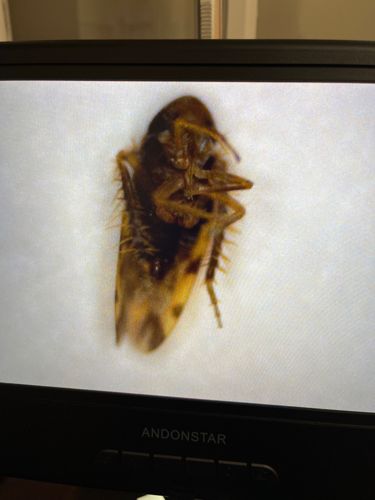Leafhopper (likely a type of planthopper due to apparent morphology from image)
Scientific Name: Various species within the families Cicadellidae (leafhoppers) or Fulgoridae, Delphacidae, etc. (planthoppers)
Order & Family: Order Hemiptera, Suborder Auchenorrhyncha (includes both leafhoppers and planthoppers)
Size: Generally small, ranging from 2 mm to 15 mm, depending on the species.

Natural Habitat
Found in diverse terrestrial environments globally, including grasslands, forests, agricultural fields, gardens. They typically inhabit vegetation, feeding on plant sap.
Diet & Feeding
Herbivorous. They feed on plant sap using their piercing-sucking mouthparts. Specific plant hosts vary widely among species, including grasses, shrubs, trees, and cultivated crops.
Behavior Patterns
Many species are highly mobile, capable of jumping and flying short distances when disturbed. They are often active during the day. Some species are solitary, while others may be found in aggregations. They undergo incomplete metamorphosis (egg, nymph, adult).
Risks & Benefits
Risks: Many species are significant agricultural pests, causing direct damage to plants by feeding and indirect damage by transmitting plant diseases (e.g., viruses, phytoplasmas). Benefits: Some species play a role in the food chain as prey for various predators (birds, spiders, other insects). They can also contribute to nutrient cycling through their feeding activities.
Identified on: 9/25/2025